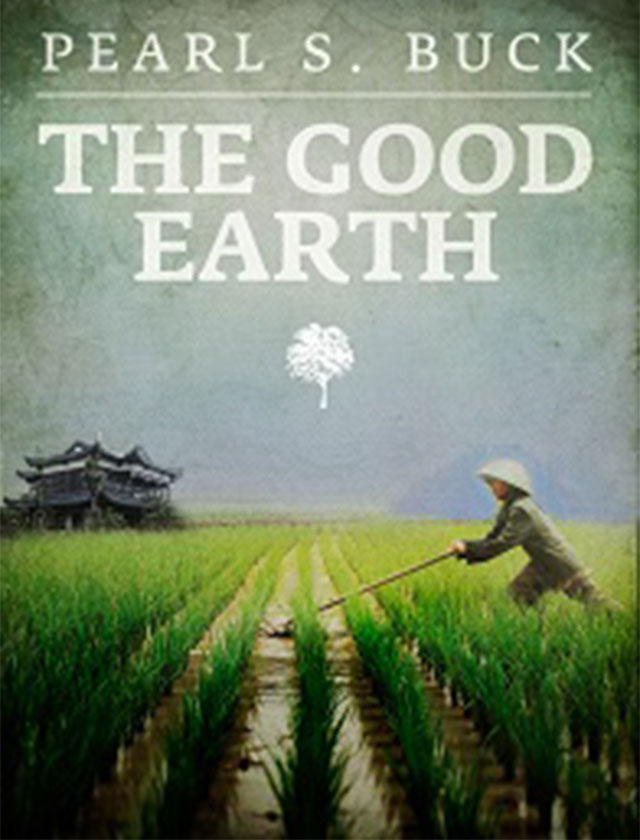The Good Earth
by Pearl S. Buck
Pearl S. Buck
Although Pearl S. Buck was born in Hillsboro, West Virginia, her parents were Christian missionaries who served a mission to China beginning when Buck was just three months old. Born Pearl Sydenstricker, Buck was also known by her Chinese name, Sai Zhenzhu. She spent her formative years in China, where she was raised to be bilingual. Buck received academic instruction in both English and Chinese. Despite their position as American Christian missionaries, the Bucks refused to see themselves as more prominent or superior than the Chinese citizens they encountered on a daily basis. This sense of equity is often represented in Buck’s portrayals of Chinese natives in her novels. However, the Boxer Rebellion caused tension for the Buck family. Most of their Chinese friends refused to stay in contact with the family, and they no longer received visits from Westerners. Buck’s father stayed behind as his family traveled to Shanghai for safety.
In 1911, Buck returned to America to attend college. However, she found the country of her birth strange and unfamiliar. Despite feeling like a foreigner in America, Buck thrived academically and was able to make friends. After graduation, Buck became a Christian missionary. However, Buck abandoned mission work when she realized that her viewpoint on religion had changed. Once she left mission work, Buck returned to China, where she met her first husband, John Lossing Buck. They moved to Suzhou, Anhui Province, which served as the inspiration for the setting of The Good Earth. Buck gave birth to a daughter, Carol, who was diagnosed with what is now known as phenylketonuria. The disorder caused Carol to experience severe problems with mental development. Directly after giving birth, Buck had to undergo a hysterectomy because of a tumor found in her uterus. Around this time, her mother also died. Although she did not have any more biological children, Buck and her husband adopted a baby girl named Janice. However, the tragic events did not bode well for her marriage, and she and John Lossing Buck divorced. Later, she married a man named Richard J. Walsh.
Buck published The Good Earth in 1931. It was her second novel but her best known. Buck’s ability to portray Chinese culture in a nonjudgmental way quickly garnered the attention of readers and critics alike. In 1932, Buck was awarded the Pulitzer Prize for The Good Earth. Although she published sequels to The Good Earth, they did not attract the fame and attention of the original novel.
Though writing remained an important part of her life, Buck dedicated herself to humanitarian efforts in her later years. She and Walsh opened an adoption agency that focused on babies who had mixed parentage, and Buck worked to defend civil liberties, immigration, and free speech until her death in 1973.
